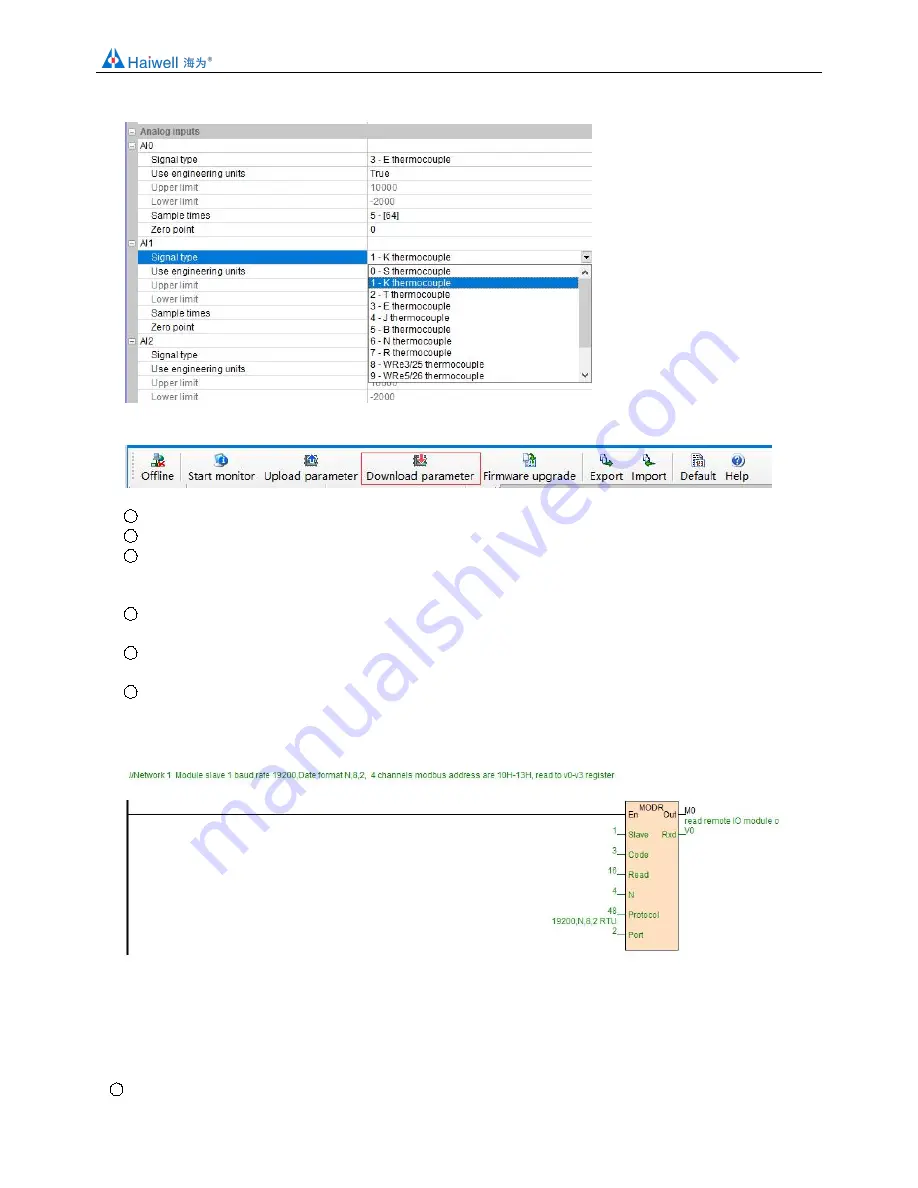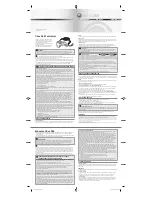
www.haiwell.com
Haiwell PLC - Temperature & Humidity Module Application Case
15 / 23
After setting, select the "Download parameter" to download the parameter into the module.
In addition, we can do the following operations through the remote module tool:
1
Online monitor the channel value of module, error code.
2
Upload the module paramater, upgrade the module firmware, then make the module support new features.
3
It can export the module configuration to save or import and restore the default value.
1.6 Remote IO appliciation example(RS485 mode): PLC reads 4-channel temperature value of H04RC module
1
Hardware wiring: PLC connects to 485 port of module by shielded twisted pair, A + connects to A +, B- connects to B-, if
the PLC connects to multiple remote IO modules, it needs to use hand in hand way to connect.
2
Modbus address: From the above 4-channel analog CR parameter table shows that, the channel 1 ~ 4 input values are
stored in 10H ~ 13H of H04RC module.
3
PLC program: Host PLC wants to read the 4-channel temperature values of remote IO module H04RC, 4-channel
temperature sensors for PT100, -2000 ~ 8500 indicates -200.0 ~ 850.0
℃
. In this example, H04RC communication is
the default parameter: Station number address is 1, baud rate is 19200, data format is N 8 2 RTU. The program of PLC
reads the 4-channel temperature values is as follows:
The host PLC reads the 4-channel temperature values of H04RC by Modbus read instruction MODR, the start address is 10H
(hexadecimal), that is, the decimal value is 16. When the communication is successful, M0 is ON, the temperature values which
are read back will be stored in V0-3, V0=235, indicating that the actual temperature of the first channel is 23.5
℃
, the same as
V3=867, indicating that the actual temperature of the fourth channel is 86.7
℃
.
1.7 Remote IO appliciation example (Ethernet mode): PLC reads and writes every channel input values of H08RC-e module
1
Hardware wiring: PLC and module Ethernet port connected with a shielded network cable, they can be connected directly









































